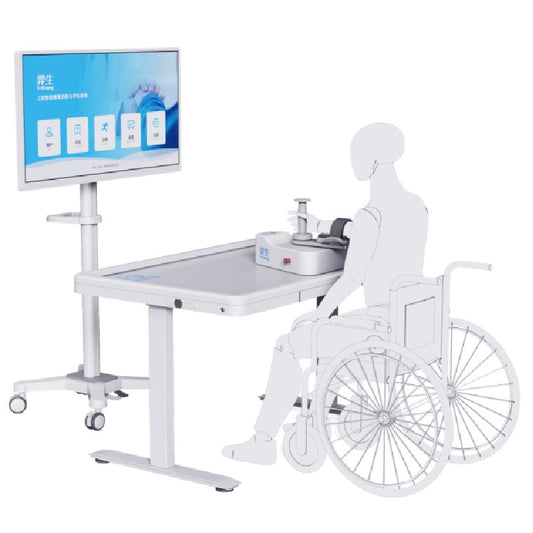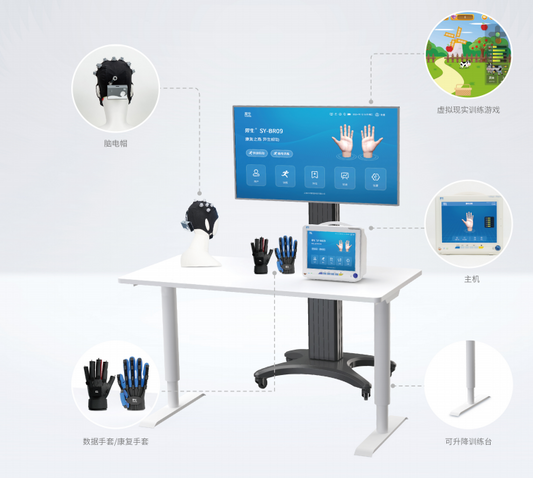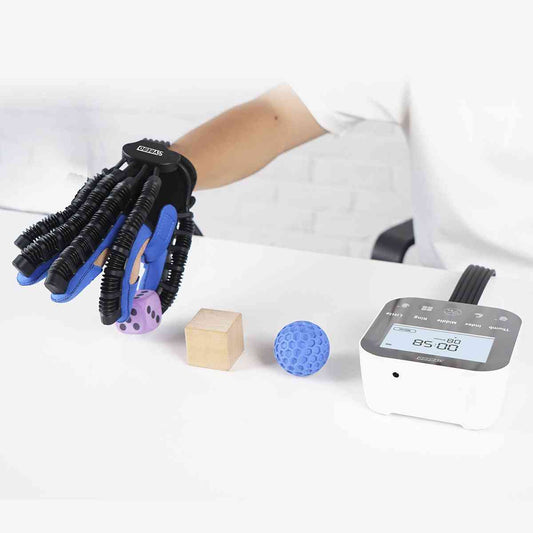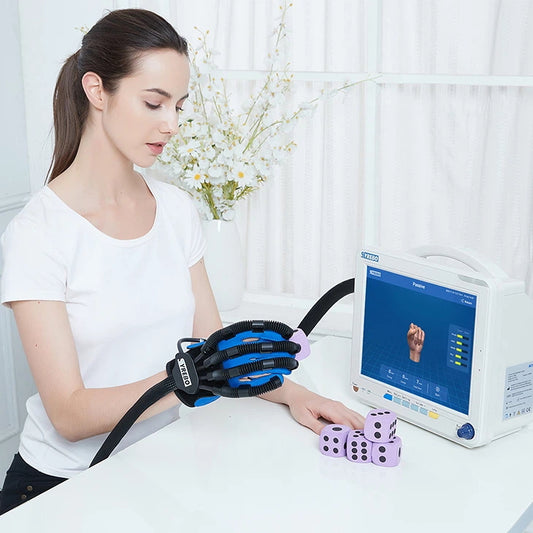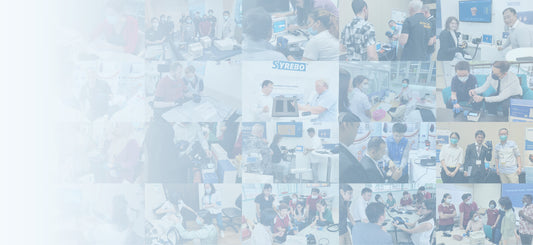How To Make a Mirror Box For Therapy?
Creating a mirror box for therapy can be a beneficial tool for various rehabilitation purposes. The mirror box consists of a box with two compartments separated by a mirror, allowing the user to see a reflection of their unaffected limb as if it were their affected limb. Here's a step-by-step guide on how to make a mirror box for therapy:
MATERIALS NEEDED:
- Acrylic mirror (size to fit the box) - Adhesive tape
- Scissors
- Construction paper or cardboard - Marker or pen
- Glue or double-sided tape
STEP 1: Prepare the box
- Ensure the box is clean and free from any debris or dust.
STEP 2: Measure and cut the mirror
- Take the acrylic mirror and measure its dimensions to fit the inside of the box.- Using a marker or pen, mark the measurements on the mirror.
- Carefully cut the mirror along the marked lines using scissors.
- Be cautious while cutting to avoid any injuries or damage to the mirror.
STEP 3: Secure the mirror
- Place the cut mirror inside the box, positioning it vertically to create two compartments.- Use adhesive tape to firmly secure the mirror to the sides of the box.
- Ensure the mirror is positioned straight and securely attached.
STEP 4: Customize the box
- Take the construction paper or cardboard and cut it into strips.- Write or draw motivational messages or designs on the strips.
- Use glue or double-sided tape to attach the strips to the inside of the box, creating a visually appealing environment.
STEP 5: Finishing touches
- Place the lid back on the box.- You can further personalize the mirror box by decorating the exterior with stickers, paint, or other craft materials.
Introduction of Mirror Therapy
One of the central intervention technologies, it has the advantages of simple operation, easy use and affordable cost for clinical application. The basic function of the central nervous system is the basic process of perception - processing - outgoing. Among them, vision, as an important external feeling of the human body, also involves the activities of high-level centers such as perception and consciousness. Mirages, reflections in water, reflections on mirrors and other natural life phenomena can "deceive" and "fool" our brains through vision. Based on the visual illusion, early Ramachandran et al. discovered and proposed mirror therapy when they used mirrors to observe patients with phantom limb pain after amputation. Mirror therapy involves the process of movement observation, movement imagination and movement imitation, emphasizing the bilateral movement of the limbs. Currently, in addition to phantom limb pain, mirror therapy is also used in common clinical diseases such as stroke, complex regional pain syndrome, cerebral palsy, hand trauma, etc. . Among them, in the field of stroke rehabilitation, clinical evidence-based evidence points out that mirror therapy has a moderate effect on the recovery of upper limb motor function after stroke, and can improve unilateral neglect, reduce pain, and improve the ability to perform activities of daily living. It is one of the more effective therapies in the field of upper limb rehabilitation for stroke.
Mechanism and Clinical Operation
(1) Mechanism
Mirror therapy is a modern rehabilitation therapy that uses mirror images to reflect the unaffected limb to promote the recovery of the patient's sensory and motor functions. As an active central intervention technology, the mechanism of mirror therapy on cerebral cortex plasticity is still an unsolved mystery. Foreign scholars concluded in a systematic review that: Mirror visual feedback increases the activity of neural areas involved in attention and cognitive control (dorsolateral prefrontal cortex, posterior cingulate gyrus, S1 and S2, frontal lobe). Therefore, mirror therapy can improve the patient's attention to the affected limb and thereby improve the control of the affected limb. The core of mirror therapy is to create the illusion of consistent bilateral synchrony to alleviate learned disuse and increase the presence of the limb. In addition, the discovery of the mirror neuron system also provides theoretical support for mirror therapy. Mirror neurons are not only excited when a specific action is performed, but also when an individual observes another of the same type performing the same action. Mirror therapy involves movement observation, and mental imagery exercises are thought to activate mirror neurons.
(2) Clinical operations
At present, traditional mirror therapy, that is, plane mirror imaging, is mostly used internationally. During clinical procedures, a mirror is placed in the midsagittal plane in front of the patient. When training the function of the affected limb, the patient places both upper limbs or lower limbs on both sides of the mirror, with the healthy limb on the reflective side. The body is slightly tilted to the healthy side so that the mirror image of the healthy hand reflected on the mirror can be seen clearly. The affected limb is blocked by the mirror and does not enter the patient's field of vision. During treatment, the patient is asked to control both limbs to perform the same movements at the same time. At this time, the healthy limb can complete it, but the affected limb cannot. Let the patient imagine that the affected limb is moving as much as possible.
Taking the rehabilitation of sensory function as an example, in terms of sensory therapy, combined with the patient's basic conditions, it involves hand grasping, wrist extension and abduction. The four training modules after forearm use of visual sensory feedback are applied to the training of the affected hand, which can improve the recovery of the patient's touch pressure sense. The optical illusion produced by mirror therapy can improve sensory and motor disorders such as light touch of the upper limbs. At the same time, for pain disorders, such as central pain after stroke, mirror therapy can be used as a pain suppressive treatment.
You can also buy a Mirror Box online
The Smart Mirror Therapy Kit SY-M1 utilizes the principles of planar mirror imaging to copy the picture of the healthy side activity to the affected side, so that the patient can imagine the movement of the affected side. With the voice commands of the therapy speaker, the speech function is converted through optical illusion, visual feedback, virtual reality and auditory feedback, combined with rehabilitation training programs, to promote neural reconstruction and the recovery of speech function in all aspects.
That's it! Your mirror box for therapy is now ready to be used. Remember to consult with a healthcare professional or therapist for proper guidance and exercises to maximize the benefits of mirror therapy. Enjoy your therapeutic journey and good luck with your rehabilitation!

